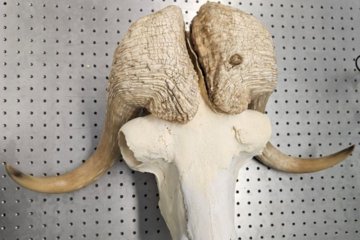All genres
461.
Talk
3D Orientation microscopy. Deutsche Gesellschaft für Materialkunde e.V. Fachausschuss Texturen, RWTH Aachen, Germany (2007)
462.
Talk
3D orientation microscopy in a FIB-SEM: A new dimension of microstructure characterisation. Res Metallica Chair 2007, KU Leuven, Belgium (2007)
463.
Talk
3D orientation microscopy in a FIB-SEM: A new dimension of microstructure characterisation. Presentation at the scientific advisory board MPI Eisenforschung, MPI Eisenforschung GmbH, Düsseldorf, Germany (2007)
464.
Talk
3D EBSD Characterization of a Nanocrystalline NiCo Alloy by use of a High-resolution Field Emission SEM-EBSD Coupled with Serial Sectioning in a Focused Ion Beam Microscope (FIB). MRS Fall Conference, Boston, MA, USA (2006)
465.
Talk
3D Orientation microscopy in a FIB – SEM. SBPMat 2006 - Brazilian MRS - meeting, Florianópolis, Brazil (2006)
466.
Talk
Determination of Phase Equilibria in the Fe3Al–Cr–Mo–C Semi-quaternary System Using a New Diffusion-multiple Technique. 12th International IUPAC Conference on High Temperature Materials Chemistry, Vienna, Austria (2006)
467.
Talk
Microstructural investigations on low alloyed TRIP steels by orientation microscopy in SEM and TEM. ESOMAT 2006, Bochum (2006)
468.
Talk
Investigation of the formation mechanism of martensite plates in Fe-30%Ni by a high resolution orientation microscopy in SEM. ESOMAT 2006, Bochum (2006)
469.
Talk
Relative Importance of Nucleation vs. Growth for Recrystallisation of Particle-containing Fe3Al Alloys. Fundamentals of Deformation and Annealing Symposium, Manchester, UK (2006)
470.
Talk
High resolution orientation microscopy in 2 and 3 dimensions to study microstructure formation processes. 2. Warmumformtag (2.WUT), Düsseldorf (2006)
471.
Talk
3D EBSD characterization and crystal plasticity FE simulation of the texture and microstructure below a nanoindent in Cu. Plasticity Conference 2006, Halifax, Canada (2006)
472.
Talk
Orientation Microscopy on Nanostructured Electrodeposited CoNi Films. Thermec - 2006, Vancouver, Canada (2006)
473.
Talk
3D-Orientierungsmikroskopie mittels FIB-SEM: Eine neue Dimension der Materialcharakterisierung. DGM, 5. AK-Treffen - Mikrostrukturcharakterisierung im REM, Halle, Germany (2006)
474.
Talk
Microstructure Control Using Phase Transformations in Ternary Gamma TiAl Alloys. Seminar talk, Universität Kassel, Kassel Germany (2006)
475.
Talk
3-dimensionale Orientierungsmikroskopie. Eine neue Dimension der Mikrostrukturcharakterisierung. FIB-workshop, Halle, Germany (2006)
476.
Talk
3D-orientation microscopy in a FIB-SEM: A new dimension of microstructure characterization. 13th Conference on Electron Backscatter Diffraction, Oxford, UK (2006)
477.
Talk
Orientation microscopy on electrodeposited samples. 13th Conference and Workshop on Electron Backscatter Diffraction, Oxford, UK (2006)
478.
Talk
Characterization of microstructure and Texture of nanostructure electrodeposited NiCo samples by use of Electron Backscatter Diffraction (EBSD). DPG – Spring meeting, Dresden, Germany (2006)
479.
Talk
Optimisation of Precipitation for the Development of Heat Resistant Fe3Al-based Alloys. Seminar talk, National Institute for Materials Science (NIMS), Tsukuba, Japan (2006)
480.
Talk
The Goss texture formation in silicon steels: Oriented nucleation or growth selection? Materials Science Seminar PAN, Krakow, Poland (2005)











